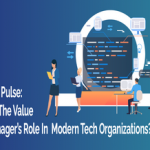HR issues can be detrimental to a work teams productivity. So it’s important to have HR knowledge and a resource to help you navigate these waters.
Handling “HR issues” well may in fact save your life and build your career. I have a friend who works at a Silicon Valley Tech/Media company. No, not a start-up. It’s actually owned by a multinational that everyone and their mother would know. This company is a big revenue generator and is well established.
As big as this company is, they have no “HR team”. Not even one HR manager or resource. Like many tech companies, the executives of this company believe that tech manager-leaders are “smart enough” to manage Geeks, and likewise, that Geeks need little HR management because they are smart. My friend tells me the management view at his company is: People need direction and work, people need to be hired, sometimes fired—but as long as Geeks have ping pong, tons of free snacks, and drinks with a happy hour on Fridays, it will be an easy, smooth running office, and that everyone is happy.
Until they are not.
And when that happens, whether it’s a necessary firing, an H-1B issue, team “work from home” members vs “in-the-office” favoritism—which have each happened to my friend the manager/director over the past few months—it will badly impact a team’s productivity.
Due to the many issues my friend experienced, it ruined his job satisfaction and he was unable to get any of his main revenue projects done until each of these problems were addressed. He is not alone as a manager in this company having these issues and wishing there was an HR resource that could help him navigate these waters. An HR resource would be beneficial in providing guidelines, sharing experiences about how to deal with these issues, possibly to sometimes handhold, or be a sounding board to walk him through these situations.
On top of these other problems, he told me of even more situations that had gotten out of control. Everyone wants the company to grow, but hiring more people meant getting rid of the ping pong table to add more work space. You would have thought taking away this perk was akin to a 25% stock price drop. It caused threats of resignations and tons of ill-will. It was resolved, for better or for worse, but what no one at the time realized, was the massive drop in productivity during that period. Instead of productivity, there was stress, gossip, threats, meetings, emails, more gossip, more stress and more meetings. A release was postponed. Important customer support tickets went unfixed for days and real, useful work almost ground to a halt.
The moral of the story? HR issues are super important and often debilitating to Geeks! Jessica Stillman brought this into the light when writing for Inc. Magazine and shared 3 HR Mistakes That can Kill Your Startup.
The top 3 reasons detailed by Stillman are:
- #1 – Not hiring an HR person
- #2 – Putting perks above communication
- #3 – Ignoring employee development
To me, #1 is the most important reason and this needs to be fixed. Tech companies need more HR help than traditional companies. If you are a manager, it is your duty to get HR help as soon as possible when any issues arise. Tech people are not always the best at handling complex and emotional situations; if getting things “Done” and staff productivity is part of your job, dealing with issues fast, without drama, and as transparently as possible is tantamount. This will not only keep teams happier and retain them, it will also keep them working productively in complex times.
HR Issues
In Part 1 of this topic, we discussed a variety of examples and situations focused on how HR tasks are often neglected in tech companies and the results when they are left to fester. Part 1 also covered a few situations including their impact on the team, communication, and respect for you as a leader/manager.
Here, in Part 2, we will focus more on hiring and firing, time management, and productivity.
A primary goal of writing on this topic is not to coach you through difficult situations. It is more to advise you on when to get more information, get support, or get trained. This article is about spreading awareness on these issues, to discuss some of their manifestations particular to tech workers, the not-so-obvious manifestations, and the by-products of problems. This article will also discuss leading tech workers and some of the new frontiers of employee relations in the new work reality.
Hiring and Firing
The Hiring Process
In Part 1 we began discussing hiring and firing:
It can be complicated. Every state in the US and different countries have laws and regulations on how this gets done. Get help.
“Hire slowly, fire quickly,” can be very difficult to do.
There are a few more issues with hiring that deserve reinforcement.
Lying on Resumes?
First, many people lie on their resumes and about their experience. Inc. Magazine references that 85% of companies reported catching people being dishonest on their resumes. The numbers are staggering.
You need to learn how to spot these. Here are 2 ways to question if you suspect a gap:
Use a skill test for multiple goals. See if the people actually have the skills you need or that they list on their resume, and also see how the applicant responds in a given situation, and how they respond under pressure. Use behavioral based interview questions, which can be found online. The concept behind behavioral based interview questions is to focus on the individual’s past performance or behaviors. Past performance or behavior is the best indicator of future performance or success.
- Check references
Checking references is mandatory. Check as many references as you can and for a few reasons, even when it can seem like a daunting task for a short stack of resumes. Since you know that many people lie on their resumes, you can use reference checks to question their experience, dates, and roles.
Also, make sure the chemistry is right. Having team interviews is essential. You hire for communication and chemistry, not solely for tech ability. This is a common mistake some managers make. They hire for tech skill or because they like the person. Hire someone who will make communication and collaboration easier for the team as well.
Don’t be in a rush to hire. If you have to rush it, set clear expectations at the on-set of employment, and closely follow up during a short probation period.
The Firing Process
Knowing that prolonged or non-firings usually have a corrosive impact on the team, you will need to do it quickly. We discussed this at great length in Part 1.
All guidelines suggest you have a script. Practice. Be prepared with supporting information and paperwork. Keep it short. A termination meeting is not a performance review discussion, the decision has been made and is final.
I remember working with a company that fell into hard times, as many companies do at some point in their growth. A product was cancelled. The rest of the company was OK. Unfortunately, the staff for which the product was cancelled, was going to be laid off. The job of the lay-off was distributed between a few managers. The higher up people did spend time thinking this through, but at a low level, the managers doing the task were not well coached or supported.
To put it simply, it did not go well. First, word spread immediately about what was going on after the first person was laid off. In place was a director focused on supporting the staff after they were laid off. In addition, I was there just checking in with the staff and the managers to see how things were going and triage if necessary.
In one instance, for this particular staff member–who some people foresaw as potentially difficult– the person firing did a few things wrong. When I checked in on where that particular manager was, we figured out he was still in the room alone with this staff member, 45 minutes after the start of their process. I knew something was wrong.
The task was conducted in his office, not a neutral space such as a conference room. Because of the setup of the room (accidently or on purpose) the staff member being laid off sat in a chair blocking the manager from getting out of the room. The employee was bargaining and justifying and had taken control of the situation. The manager did not know what to do, was blocked from the door, and was even unable to say, “excuse me a minute, let me go ask person X for some help on this…”.
Few people realize firing is just as stressful as being fired, but there is more sympathy going to the staff being laid off than the person carrying out the deed.
I knocked, interrupted, and invited myself in. As I stood there, I said, “Let’s move this to a room where all 3 of us can sit down.” I took us to another room. Once we changed rooms, the dynamic quickly changed, which gave them both a moment to breathe. They quickly explained to me where they were. I said, “OK. Let’s end this part of the decision now. Let’s make sure your manager knows your idea and concerns and let him take that back to his managers and see what he can do, but for now, this meeting is over.” That manager did go to his manager and got more information. They came to an agreement and both of them met with the employee.
There were so many things wrong in this situation. Getting help, coaching, and practice did not happen in that situation and it was far more stressful than it had to be for everyone involved.
It is important that you practice and brainstorm possible scenarios of how a certain employee may emotionally react. When you make a script and practice, you will be better prepared for the situation and can take control, should the termination go toughly. These are some possible scenarios of termination: getting belligerent, arguing, bargaining, getting emotional, and making threats of legal action or other harm. If any of these scenarios occur, managers will need to remain professional, in control, and if necessary, end the meeting. This can be done by simply telling the employee that the meeting is no longer productive and another meeting will be scheduled when the time can be focused and productive. Even when these events go smoothly and amicably, they are rarely “easy”.
Time Management
Every manager knows their main job is to simply get work done. Modern managers support their staff to create and produce. It’s important that they keep knowledge workers working, communicating, and creative. Managers need to create an environment where teams feel supported in their work and are cleared from obstacles. This takes balance.
Everyone is busy. Everyone has too much to do and too many texts, chats, IMs, and team productivity tools that get in the way of productivity. Very few people have good methods of ignoring distractions, staying focused, cutting down on interruptions, and putting down their iPhones!
Keeping Focus
There is a method used for time management and productivity that is widely popular among tech people. Some tech companies I know of, offer training in it. Every time I bring it up in a group of Geeks, undoubtedly, only a few people know it. It’s the Pomodoro Method. See the sidebar for information and links. It is based on an optimal focus time of 25 minute blocks with breaks of a few minutes.
My experience with this method is that it is highly successful for me to use in my mornings as it gives me uninterrupted blocks of time for maximum focus and productivity. My afternoons are structured differently. Since I often have longer meetings or need bigger blocks of communication and collaboration time, I only occasionally use Pomodoros. But mornings are for Pomodoro. Learn about them. The idea comes from having a timer on your desk, either an Italian style tomato (Pomodoro) timer, from which this practice gets its name, or and American style egg timer to measure out the blocks of focus time.
Here are the problems I often see:
- Other people in the office or team are not doing it and don’t like it, which is too bad. You are missing out on protecting your brain and being more effective!
- One of the purposes of the Pomodoro (tomato timer), egg timer, or kitchen timer is that people see the timer on your desk. They know what that means and leave you alone. If someone needs/wants to talk to me now, the longest they have to wait is 25 minutes! But if I am focused, send me a mail or text saying, “when you take a break come by my desk or call or whatever.” For the sake of your brain not multitasking or context switching, it is worth it.
- If it’s an emergency, fine, interrupt me. Emergencies are rarer than you think.
- There are many, many desktop and mobile apps specifically for this method with 25 minute timers readily available to you. It’s an easy practice to do, and can be done via iphone. This article details the ten best pomodoro apps.
The idea of individual focus and productivity may seem to run counter to an idea we constantly bring up again and again: collaboration and communication!
They actually go best hand in hand. When you are working alone and focused, make sure you stay focused. When it is time to collaborate, have a good space for that. If you are not face-to-face and need a tool, set aside time for it…in my experience, collaboration is best done in blocks of time rather than a random or constant states of interruption.
An Optimal State of Collaboration
There is an optimal state better than being so focused on separate times for quiet work vs collaborative work. This requires a few pieces to be put in place to be successful. Such pieces include:
- Team members working at the same table so they do not have to walk across an office to talk to each other or yell across the office to talk to each other.
- Team members focused in the same context area to minimize context-switching. Eliminate context switching so teams can be, as the phrase goes, hyper-productive. Different than multi-tasking, context switching is the process of storing the state of a process or of a thread so that it can be restored and execution resumed from the same point at a later time. This stopping and resuming has a brain cost many people do not realize.
The issue I often see with teams in very close quarters or sharing the same worktable is multiple unproductive conversations crossing each other about:
The label on a new column in the database. A bug found in production that is being triaged. A changed parameter from an API of another team. A restaurant someone went to over the weekend…
With all these conversations happening at the same time, team members are in a constant state of interruption instead of being hyper-productive.
The first step is to enlighten people of the issues around productivity, context-switching, and multi-tasking as well as to provide a separate space for more interaction or more focused work. If you can’t identify with the situation mentioned above, your team usually stays focused, on target, and are respectful of other people in the room, perhaps—constant collaboration will work for you. I have seen it work, but only rarely.
Make sure your team is aware of the mental cost of multi-tasking and task switching. It may be prudent to instill techniques like the Pomodoro Method to help them focus, collaborate, and be productive in whatever their tasks demand. If your team is already super focused and sits in a highly collaborative workspace with little context switching, good for you!
Summary
HR issues and normal work issues can be a minefield. For tech leaders and managers, they will be your greatest test.
In many tech companies, there is a lack of support, information, and knowledge about how to navigate these sometimes easy, sometimes very difficult, but always unknown and unforeseen waters.
In the situations described in Part 1 & 2 here, I share experiences where a seemingly straightforward normal work situation had unforeseen consequences, such as productivity hits, you being judged and getting a reputation, for better or for worse, on how you handle or lead through these issues, and the unique demands on knowledge workers, Millennials, and tech workers in general for honesty, transparency, fair treatment and good work situations. They are your greatest tests. Be prepared! Learn a lot. Get help.























